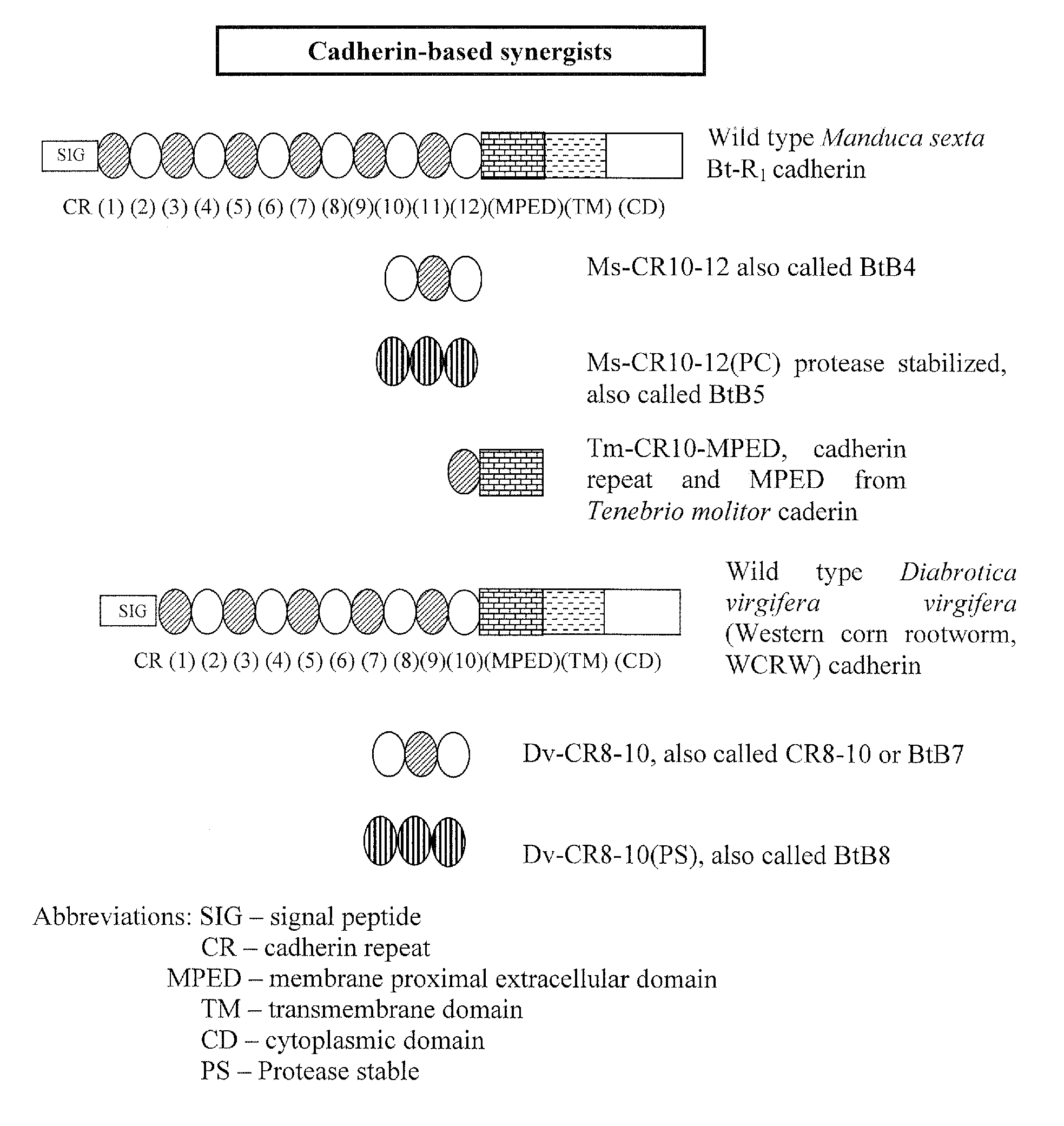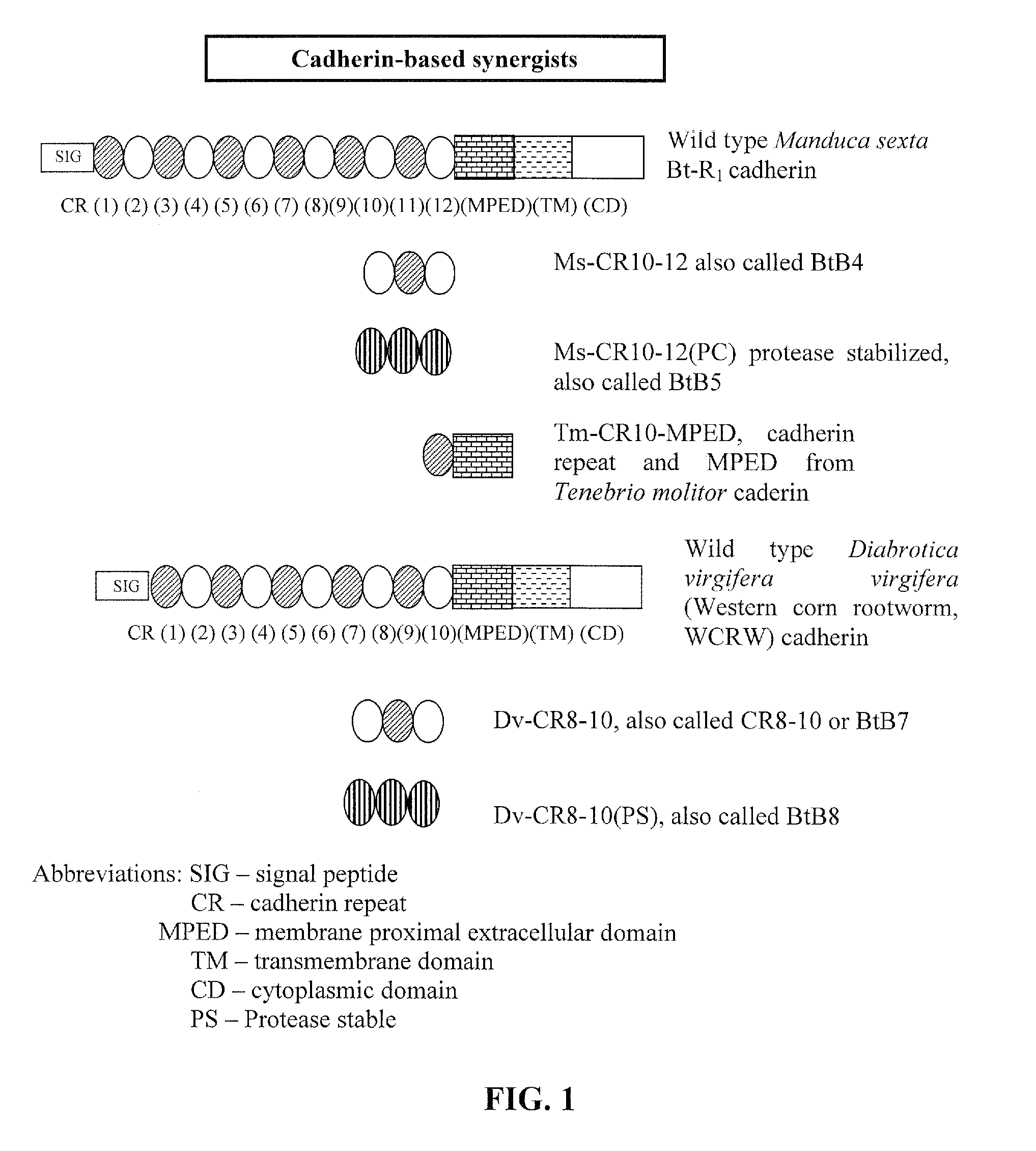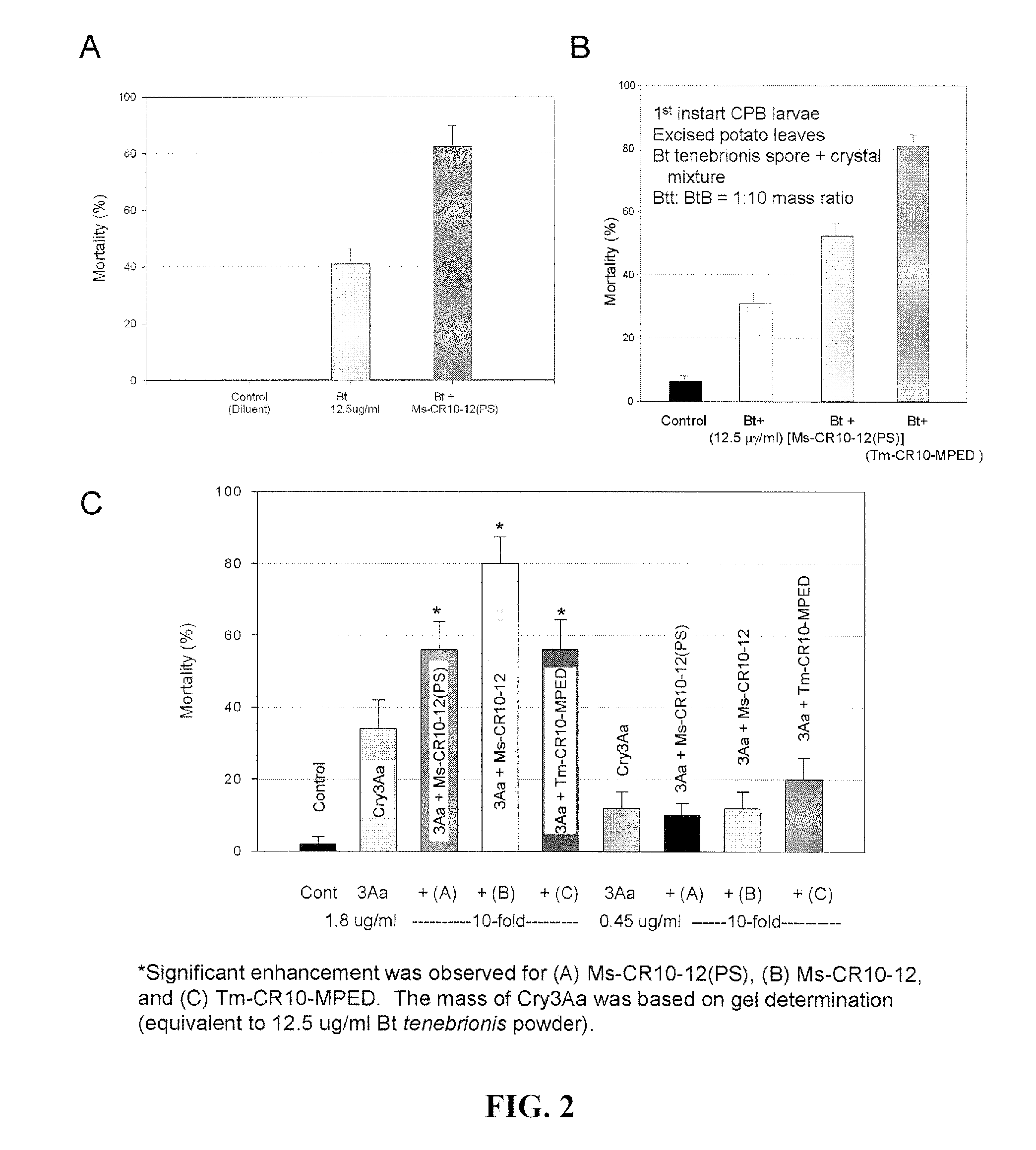Enhancement of bacillus thuringiensis cry protein toxicities to coleopterans, and novel insect cadherin fragments
a technology of bacillus thuringiensis and cry protein, which is applied in the direction of peptide/protein ingredients, biocide, peptides, etc., can solve the problems of limited use and sales of biopesticides
- Summary
- Abstract
- Description
- Claims
- Application Information
AI Technical Summary
Problems solved by technology
Method used
Image
Examples
example 1
Cloning and Expression of CR8-10 of the Western Corn Rootworm Cadherin-Like Protein
[0062]A DNA fragment encoding amino acids 961-1329 (corresponding to CR8-10 sequence) of the D. virgiftra virgifera cadherin-like protein (GI:156144975) was synthesized by GenScript Corp. (Piscataway, N.J.) and the synthetic gene was inserted between the Nde I and HindIII restriction enzyme sites of an expression vector, pET30a(+) (Novagen, Madison, Wis.). The coding sequence and clone orientation were confirmed by sequencing (Molecular Genetics Instrumentation Facility at University of Georgia). The pET construct was transformed into E. coli strain BL21(DE3) / pRIL (Stratagene, La Jolla, Calif.), and positive clones were selected on LB plates containing kanamycin and chloramphenicol. The CR8-10 peptide was overexpressed in E. coli as inclusion bodies. The expression and purification protocol for the truncated cadherin fragment was as described in a previous paper (Chen et al., 2007). The inclusion body...
example 2
Culture of Bt Tenebrionis and Purification of Cry3Aa Crystals
[0063]Bt tenebrionis strain was grown in peptone glucose salts medium (Brownbridge and Margalit, 1986) until sporulation and cell lysis. The spore crystal mixture was harvested by centrifugation, suspended in 0.1M NaCl, 2% Triton X-100, 20 mM Bis-Tris, pH6.5 and sonicated. Spores and crystals were pelleted by centrifugation at 12,000 g for 10 min, washed twice with 0.5M NaCl, followed by a single wash in distilled water. Cry3Aa crystals were purified according to (Slaney et al., 1992) and the final Cry3Aa protein concentration was determined based on band density on SDS-15% PAGE, using BSA as standard. Crystals were stored at 4° C. until used for experimentation.
example 3
Cloning and Expression of the Cry3Bb Gene
[0064]The Cry3Bb coding region was cloned by PCR using total DNA extracted from the Bt biological insecticide Raven (Ecogen, Inc. Langhorne, Pa.) as template with primers Cry3Bb / FWD (CAGGTCTAGAGTTATGTATTATGATAAGAATGGG) and Cry3Bb / REV (TAAACTCGAGTTACAATTGTACTGGGATAAATTC). The PCR amplified cry3Bb gene was cloned into pGEM-T Easy vector (Promega, Madison, Wis.), and then subcloned between the Xba I and XhoI sites of the pET30a(+). The clone called Cry3Bb / pET was transformed into E. coli strain BL21-CodonPlus (DE3) / pRIL (Stratagene, LaJolla, Calif.). The coding sequence and clone orientation were confirmed by sequencing. The expression and purification protocol for the Cry3Bb protein inclusion bodies was as described above for CR8-10 peptide.
PUM
| Property | Measurement | Unit |
|---|---|---|
| melting temperature | aaaaa | aaaaa |
| Tm | aaaaa | aaaaa |
| pH | aaaaa | aaaaa |
Abstract
Description
Claims
Application Information
 Login to View More
Login to View More - R&D
- Intellectual Property
- Life Sciences
- Materials
- Tech Scout
- Unparalleled Data Quality
- Higher Quality Content
- 60% Fewer Hallucinations
Browse by: Latest US Patents, China's latest patents, Technical Efficacy Thesaurus, Application Domain, Technology Topic, Popular Technical Reports.
© 2025 PatSnap. All rights reserved.Legal|Privacy policy|Modern Slavery Act Transparency Statement|Sitemap|About US| Contact US: help@patsnap.com



